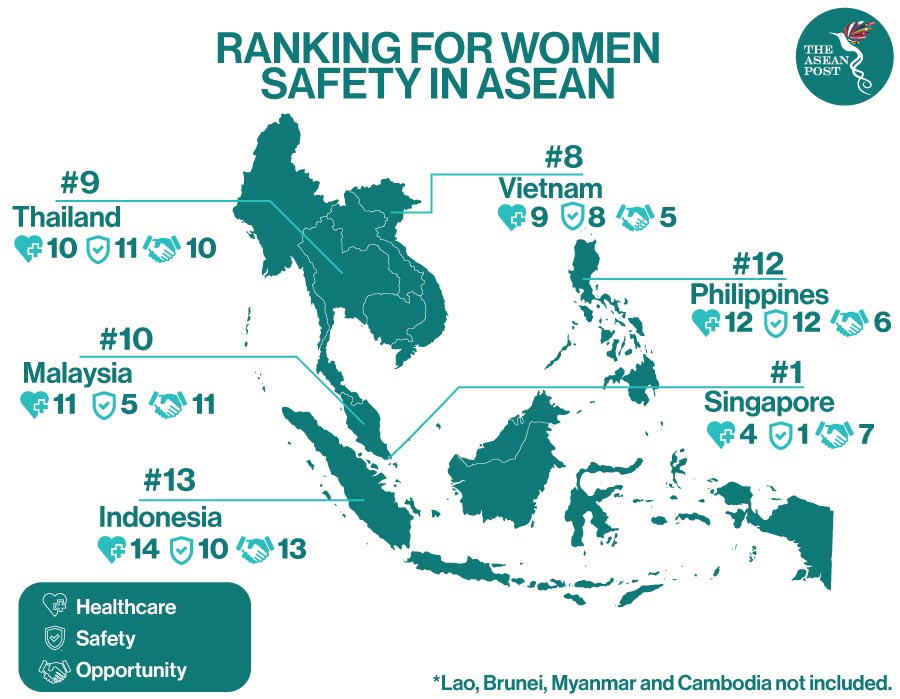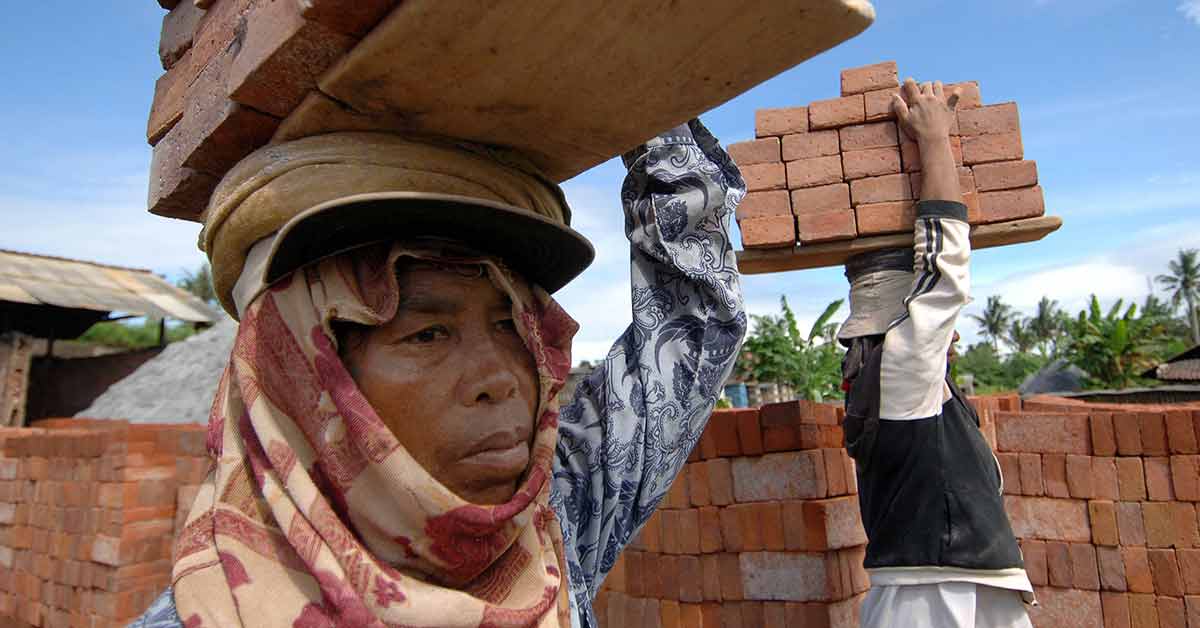According to a study conducted by Singapore-based research company ValueChampion, Indonesia is the second-most dangerous country for women in the Asia Pacific region after India, while the Philippines is the third most dangerous. Singapore is the safest country across the region.
The 2019 study also ranked Vietnam, Thailand and Malaysia as the 8th, 9th, and 10th safest countries for women, respectively, out of 14 countries in the Asia Pacific. These countries still have a lot of room to improve in terms of healthcare and opportunities for women.
The bottom three countries; the Philippines, Indonesia and India were found to have subpar access to healthcare, lax laws regarding women's safety, poor access to family planning resources and overall inequality.
"Deeply entrenched patriarchal attitudes either due to cultural or religious beliefs led to women fearing for their well-being more often than in other countries on our list," explained Anastassia Evlanova, Research Analyst at ValueChampion.

This is not the first time Indonesia is in the spotlight over its treatment of women. Data from the Indonesian National Commission on Violence against Women (Komnas Perempuan) shows that of the 259,150 cases of violence against women in 2016, some 3,495 were domestic sexual harassment and 2,290 were sexual abuse in the community or at the workplace. Unfortunately, incidences of sexual harassment continue to rise in the populous ASEAN state member.
Despite laws prohibiting rape, domestic abuse and other forms of violence – a nationwide survey by Indonesia’s Women’s Empowerment and Child Protection Ministry found that two in five women – or just over 41 percent, have experienced at least one of the four types of violence (physical, sexual, emotional and economic) in her lifetime. While over 33 percent of women in the archipelago aged 15 to 64 had experienced physical and/or sexual violence.
Violence And Health-Related Problems
While Filipino governmental structures exist to help women achieve better quality of life, violence against women in the Philippines is still a problem on the individual level.
In the archipelago, where women fare better than in most countries globally with 96 women to every 100 men in leadership positions and around 28 percent women representation in parliament, incidences of violence against women is alarming. According to the 2017 National Demographic and Health Survey (NDHS), around 26 percent of surveyed ever-married Filipino women aged between 15-49 have experienced physical, sexual or emotional violence at the hands of their husbands or partners.
According to the Philippine Commission on Women (PCW), the results of such surveys are more indicative of the prevalence of violence against women in the country, compared to administrative data from social and security service providers like the police, social and health workers. This is due to the nature of data gathered that relies solely on reported cases.
“Violence against women is a worldwide and national epidemic. The numbers are just too high... It is an urgent situation and it has been going on for so very long,” said Sylvia Claudio, Dean of the University of the Philippines' College of Social Work and Community Development.
What makes it worse for women in these countries is the fact that – by the nature of being a developing country – access to healthcare isn’t always of the highest quality and education may also be inaccessible for some.
This leads to women in these three countries not only having to face an increased risk of crime at the hands of their spouses or discrimination in education or employment, but also an increased risk of dying from health-related problems.
According to the ValueChampion report, the maternal mortality rate for these three countries is above 100 deaths per 100,000 women compared to less than 10 deaths per 100,000 women in top ranked countries.
ValueChampion used data from various sources, including the United Nations (UN) Human Development Index, Global Peace Index, World Bank and United States (US) State Department. It noted that the data might be imperfect. For instance, sexual harassment and domestic crimes were underreported in every country, hence the lack of actual data on violence against women.
Related Articles:
